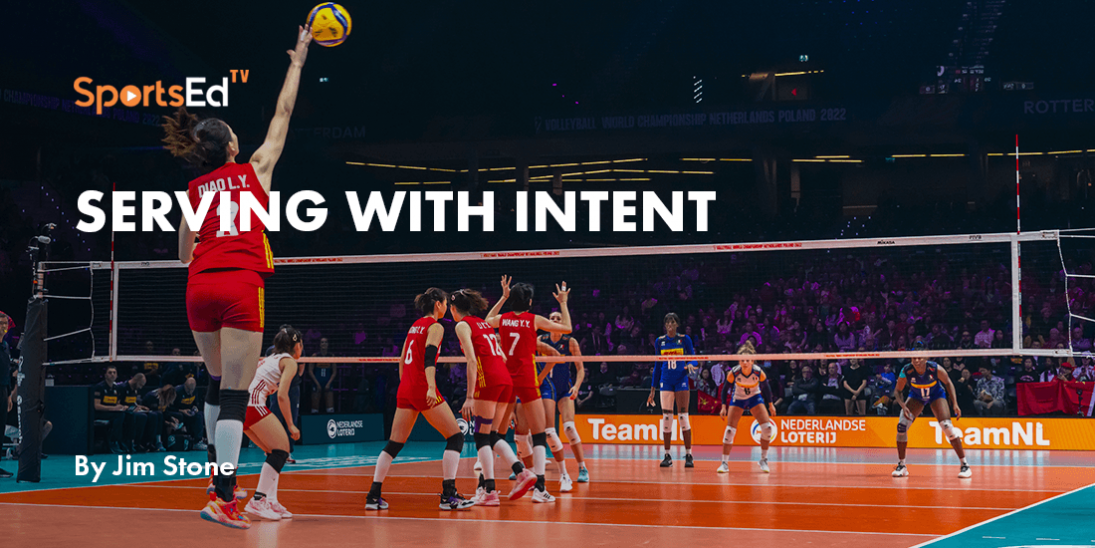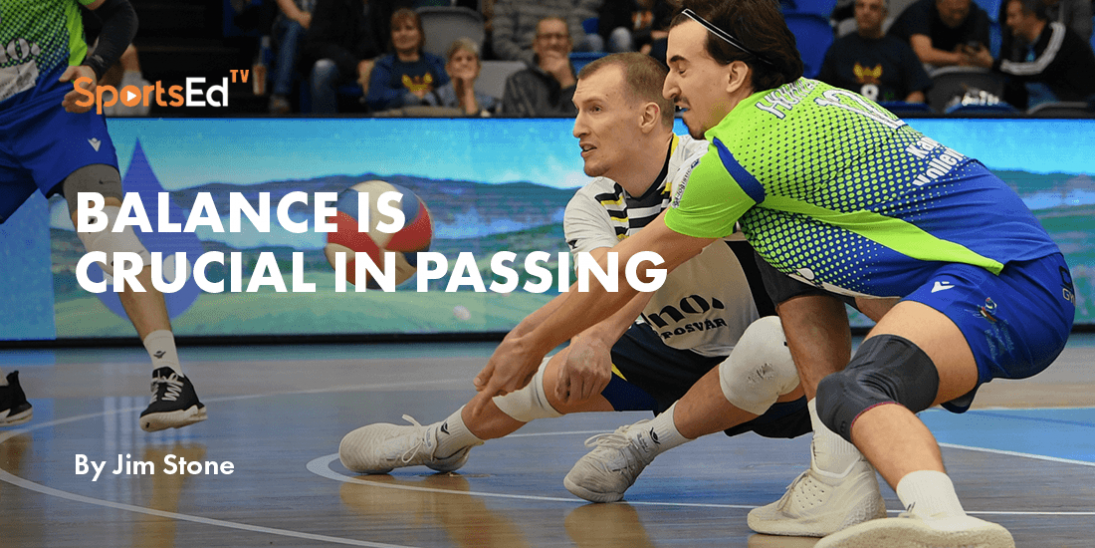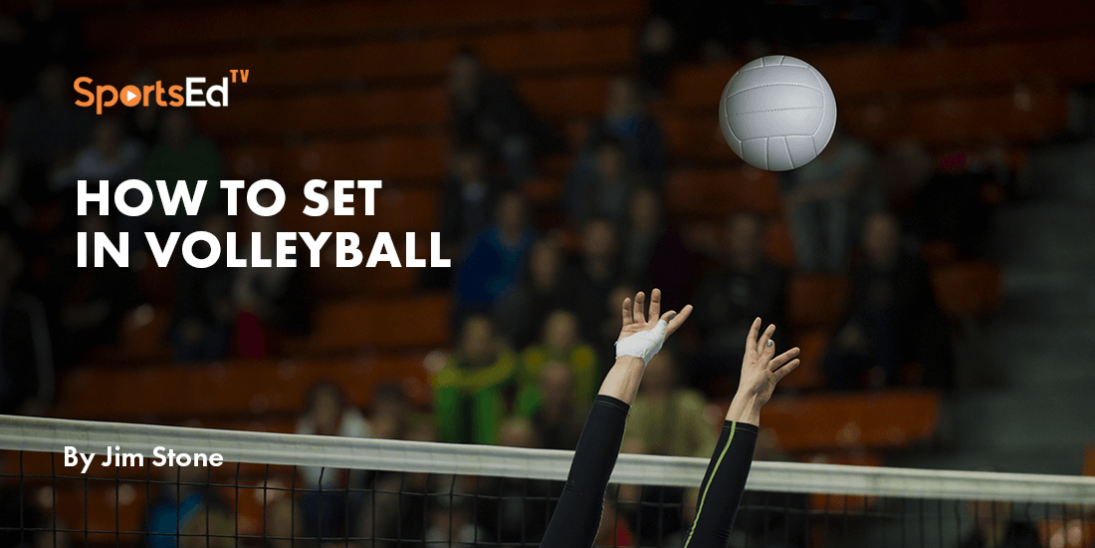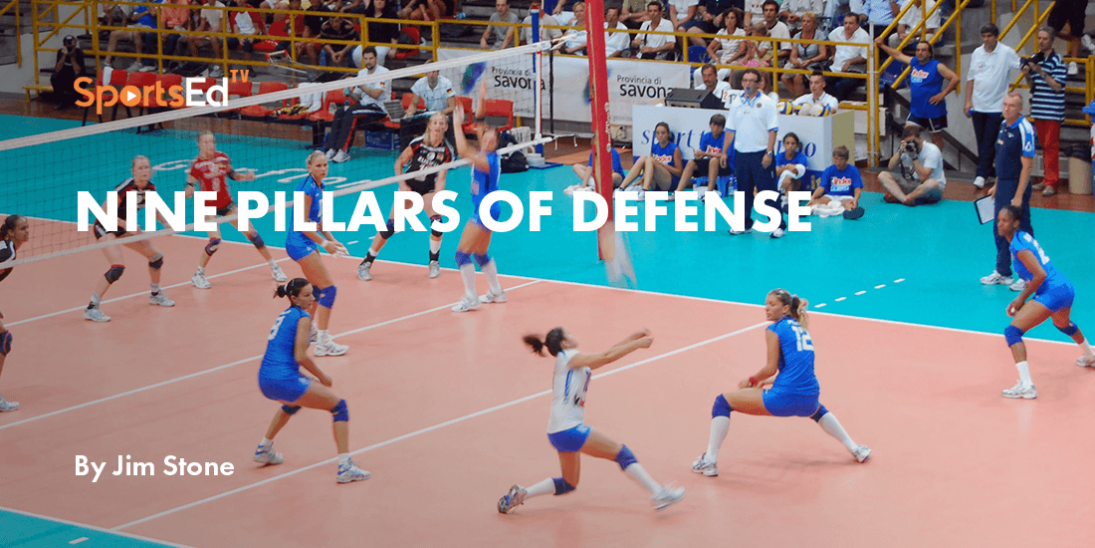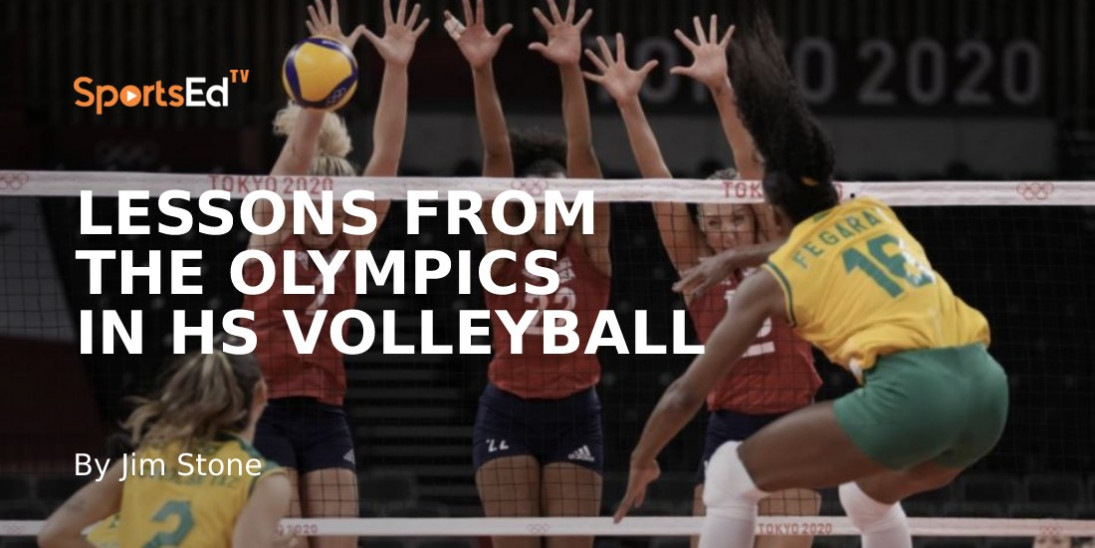Volleyball
Welcome and thanks for visiting...

Middle Blocker In Volleyball
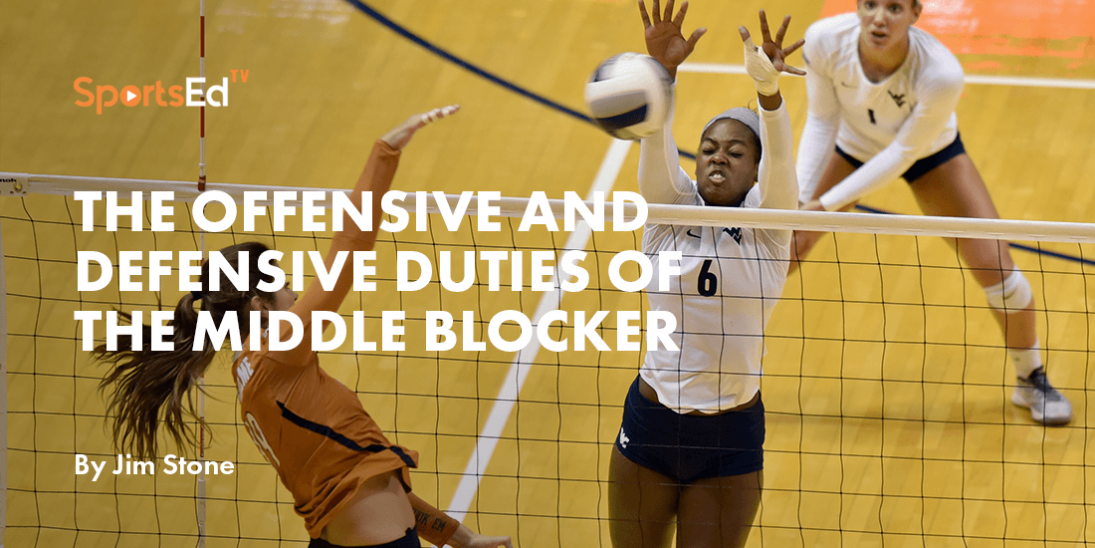
The middle blocking position in volleyball is, arguably, the most demanding position on the court. Although the position is commonly termed "middle blocker," the position also is a crucial component of a team's offensive system. Defending the entire net, in combination with the offensive demands of attacking from both serve-receive and defensive transition, place significant challenges on the middle blocker.
What is a middle blocker in volleyball?
In volleyball, a middle blocker is a player who typically plays near the net and is responsible for blocking shots from the opposing team's hitters. They also have a role in attacking the ball on their own team's offense. Middle blockers typically have a good vertical jump and are usually one of the taller players on the team. They also have to be quick and agile to move around the court to make blocks. They are also responsible for playing defense, digging, and passing the ball.
The demands of the position require the middle blocker to be tall, athletic, technically sound, have good vision, and have an extremely competitive nature. Detailing all the middle blocker's duties would require an entire book. This article will provide an overview of the fundamental concepts of attacking and blocking from the middle position. However, I do delve into the middle blocking position in additional detail in my book, A Game Plan for Better Practices.
The Middle Blocker as an Attacker
The middle hitter's primary responsibility is attacking the middle 1/3 of the court. In some offensive systems, the middle hitter will attack behind the setter. Generally, the middle attack is a fast-tempo attack placing pressure on the opposing blockers. I will present three types of attacks for the middle hitter. Although these attacks can go by any moniker, I will call them a 1-set, a 31-set, and the slide set.
The 1-set and the 31-set
The 1-set is designed to attack quickly in front of and very close to the setter. The reason for the quick tempo is to place pressure on the middle blocker to decide to block the quick attack and risk not being able to get to the outside attacker if that is where the set is directed. If the focus of the middle blocker is the outside attack, they risk being late to block the quick 1-set.
The concept is the same with the 31-set. The primary difference is the 31-set is attacked a distance away from the setter. Again, this forces a decision for the middle blocker. If the middle blocker stays with the 31 attacker, they risk being unable to defend an attack from the right-side attacker. If the middle blocker focuses' on the right-side attack, they are challenged to block the 31's attack.
The 1-set and the 31-set are demonstrated in the video.
The Slide Attack
The slide attack will force the blockers to defend the entire net. When executed correctly, the slide attack will put a lot of offensive pressure on the opponent's left front blocker. The demonstration in the video below shows the middle attacker running to the point of attack on the right antenna. The setter must set a fast tempo for the antennae. The hitter beats the left front blocker with a hard shot down the line. The middle hitter can attack a slide set at any point behind the setter, which places tremendous pressure on the opponent's left-front blocker.
Attacking the 1-set, the 31-set, and the slide from a serve-receive scenario will present challenges to the middle hitter regarding establishing the correct court position relative to the setter and coordinating the attack approach with the timing of a fast-tempo set. These challenges are multiplied when the middle hitter attacks after blocking, commonly termed transition attacking. After blocking, the middle attacker must get to a "home base."
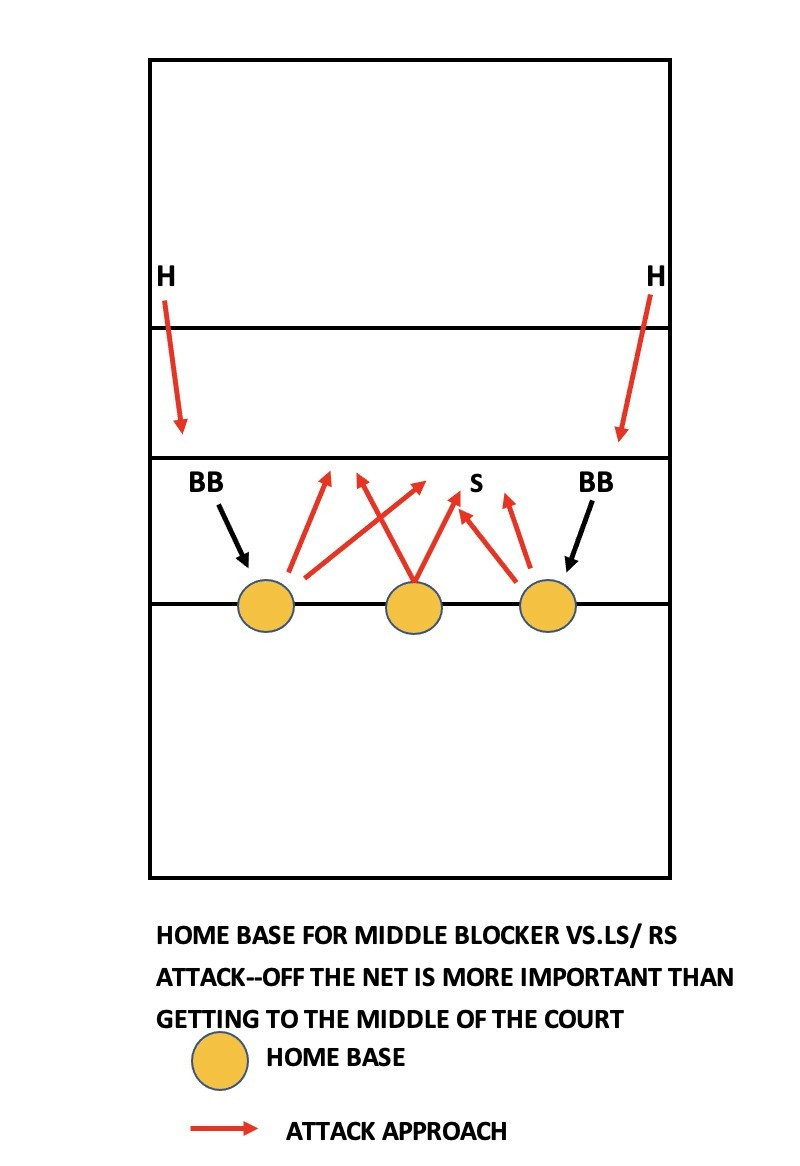
Getting to the home base position will facilitate a quality approach for the attack. The home base position is dependent upon the location of the block. Simply put, after the block, the middle blocker will drop directly off the net, then using visual cues and within the team's offensive system, approach to attack the 1-set, the 31-set, or a slide attack.
Defensive Responsibilities for the Middle Blocker
The blocking component of the middle blocker position is critical to the defensive success of any team. The middle blocker's primary duty is to block the middle one-third of the court. Then, should the opponent's attack occur from the sideline, the middle blocker must pursue and join the outside blocker in defending the outside attack. Since it is nine meters from sideline to sideline, the ability to determine the location of the attack and move quickly laterally is essential to blocking success.
Since most offensive sets go to the sidelines, the middle blocker must start in a posture that facilitates lateral movement. I like the blocker to be balanced, with the hands at the chest level or lower.
One of the many challenges of the position is every play presents a different look. The middle attack comes from different locations along the net. Since every situation is unique, the middle blocker must be comfortable with various footwork patterns. I will focus on four footwork patterns.
Shuffle Step Block Footwork
Shuffle Step to Block is used when the blocker has a short distance to cover or has sufficient time to move to the point of attack. The advantage of the shuffle step is that the shoulders stay square to the net, and it is easy to learn how to block movement for the younger player. However, it is slower than the crossover step when moving a long distance to block or when the tempo of the opposing offense is fast.
Three-Step Crossover Block Footwork
The Three-Step Crossover/Two-Step &; Hop is a common footwork pattern when the middle blocker goes to the outside. The difference is with the crossover; the blocker runs into the block jump. With the two-step-hop block, the block will jump into the block. The blockers will choose which is most comfortable and effective.
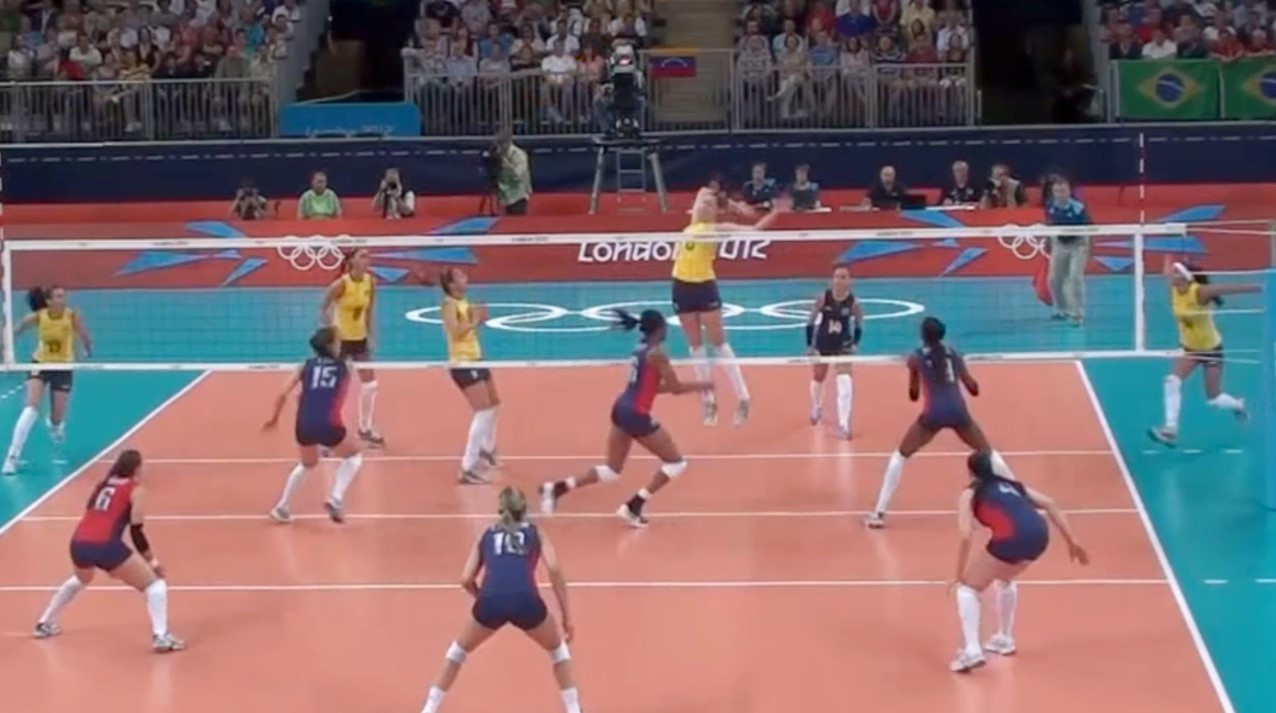
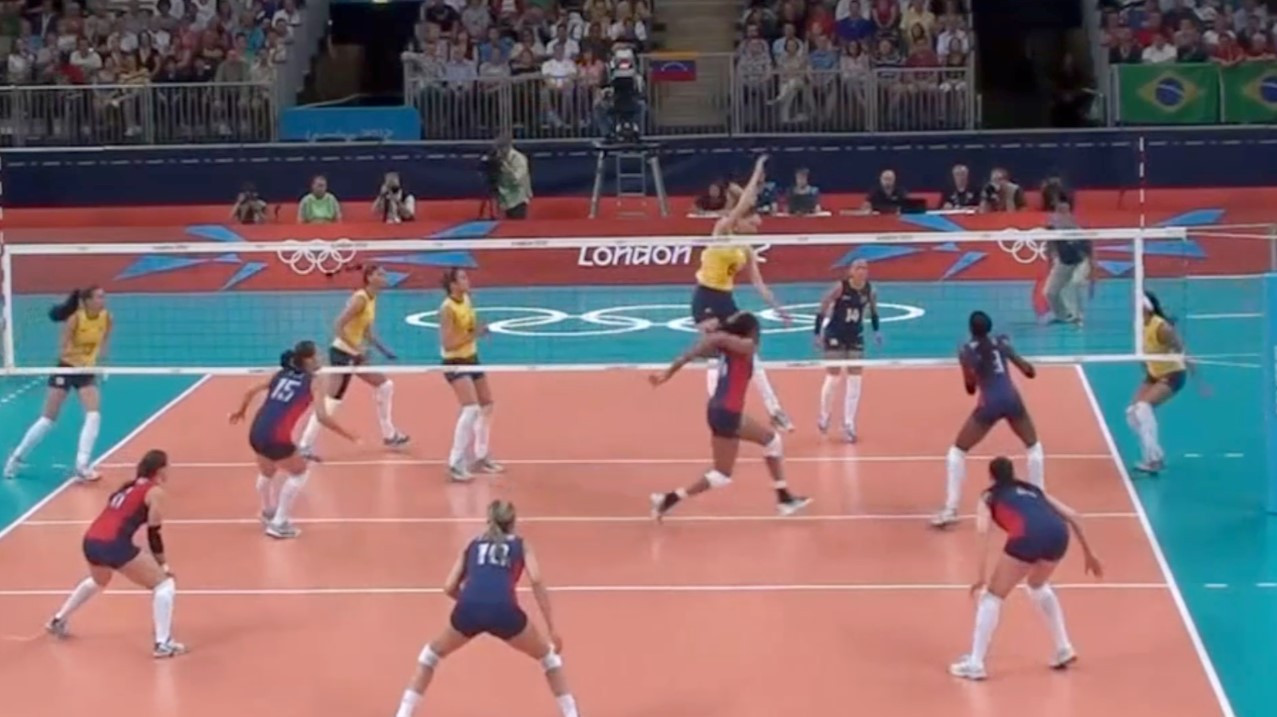
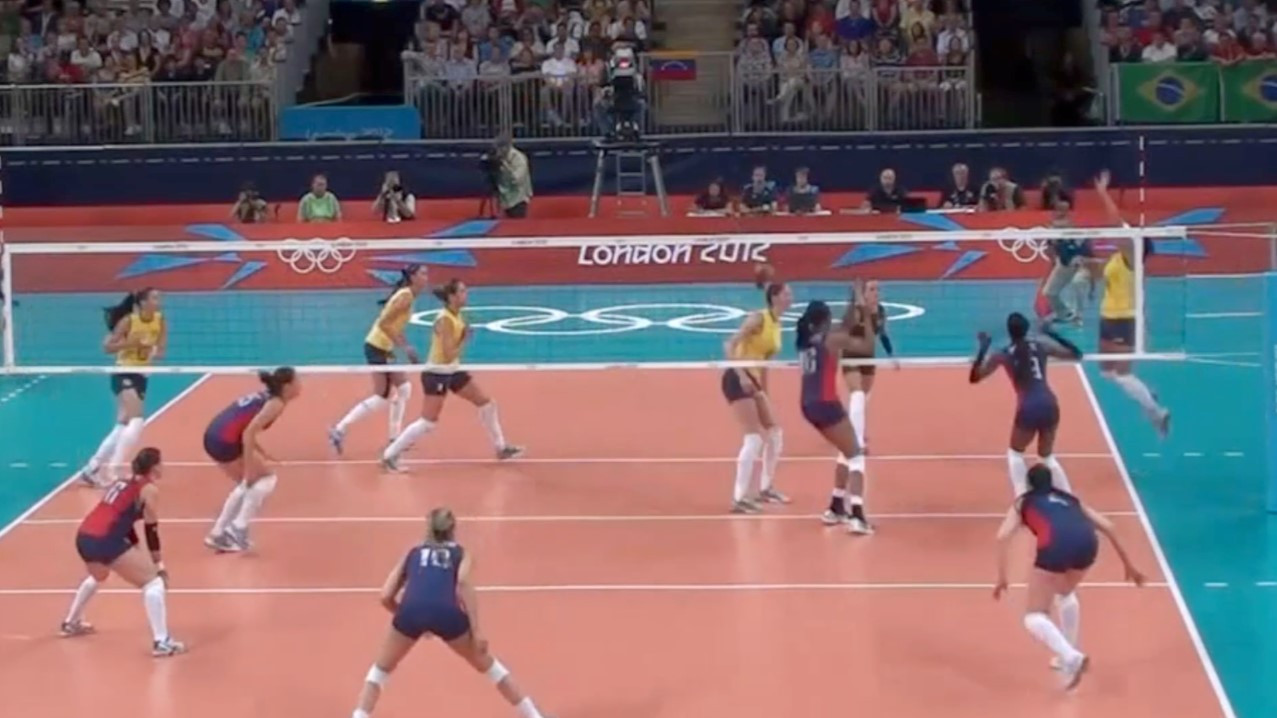
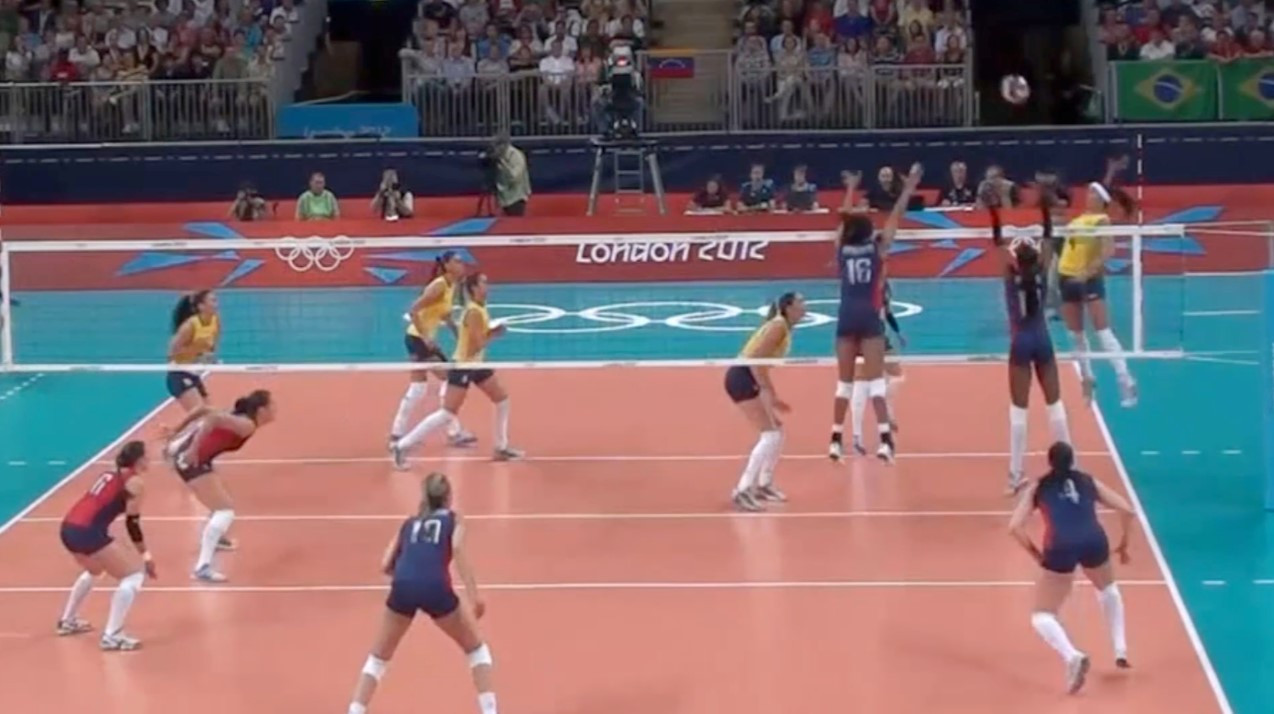
The Two-Step, Hop blocking footwork is very similar to the three-step crossover. The only difference is that the blocker will take the first two steps in the same manner as the 3-step footwork but then hop into their jump. Some blockers find this footwork more comfortable, enabling them to have their shoulders square to the net when jumping.
Two-Step Crossover Block Footwork
The Two-Step Crossover is a footwork pattern used when there is a shorter distance to cover, or the speed of the set prevents using a full three-step crossover blocking move.
One-Step Crossover Block Footwork
The One-Step Crossover is used to cover the longest possible distance in the shortest amount of time.
The middle blocker must be comfortable with the above footwork going both left and right. The middle blocker must reach the point of attack, place the hands over the net, and try to block the attack by shaping the blocked ball back into the opponent's court.
At the higher levels of play, the speed of the offensive attack creates significant blocking challenges for the middle blocker. Also, at the higher levels, the middle blocker must contend with opposing attackers coming from the back row. It is challenging to stop a quality opponent if they are operating "in-system."
From an offensive perspective, the effectiveness of the middle attack is vital to the offensive efficiency of the outside attackers. If the middle attack is effective, the opposing middle blocker must focus their energies on stopping this attack and potentially becomes less successful with blocking the outside attack.
The middle blocking position has significant challenges from both an offensive and defensive perspective. Although good skills are essential to success, the player's mental makeup and willingness to embrace the challenges are equally important.




